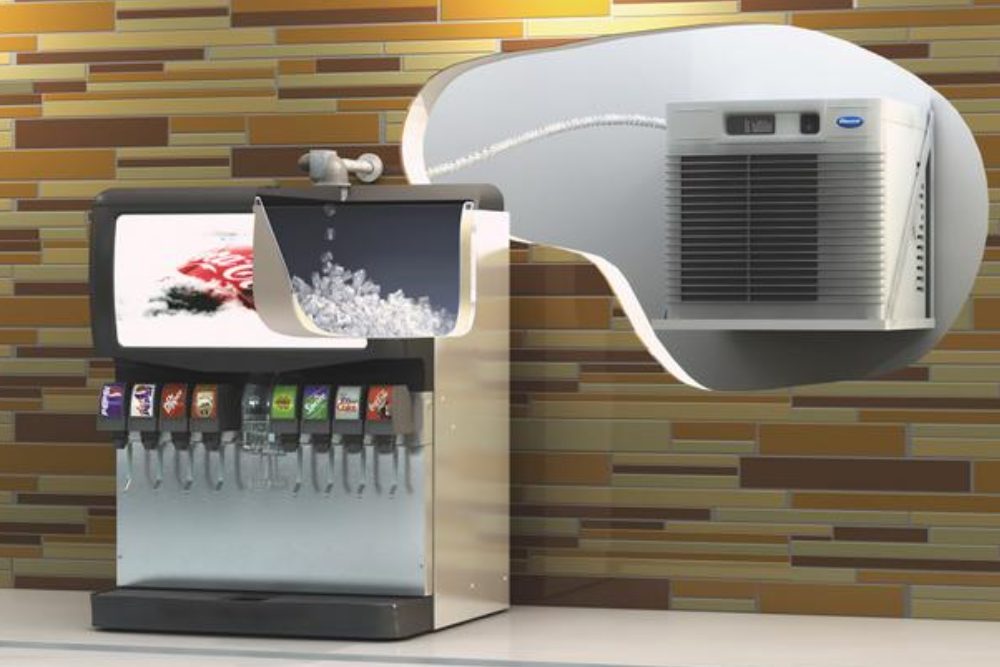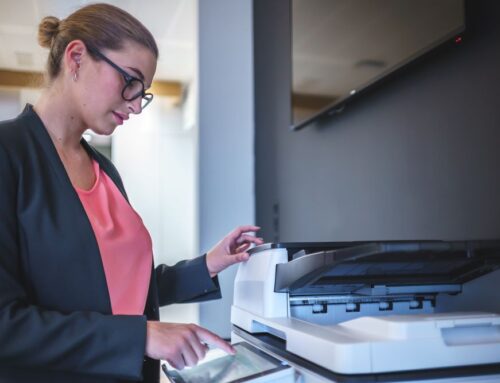When it comes to commercial ice makers, things have certainly come a long way since American inventor John Corrie devised the first one back in 1854. Using the principle of evaporated cooling, this invention revolutionized the process of storing and transporting food.
Innovation soon followed, with the French engineer Ferdinand Carré’s invention of an ammonia-based cooling system in 1859, and German engineer Carl von Linde’s ice maker (1876) prompting the spread of commercial ice makers for both commercial and residential use. These inventions were a major factor in the growth of the frozen foods industry, so ubiquitous today.
Electric Commercial Ice Makers
The further development of electricity in the early 20th century saw the introduction of electric motors into commercial ice makers, fueling a proliferation of new, ever more powerful, and efficient machines to meet growing demand from both businesses and residences. By the mid-20th century, with the rise of household appliances, the market for home ice-makers experienced phenomenal growth.
As freezing technology continued to improve, by the late 20th century the frozen food industry had grown into an essential component of modern life, transforming the way food is transported and consumed around the world. Needless to say, commercial ice makers were, and remain, a core component of the frozen food supply chain, from the factory to the store.
Commercial ice makers also became an important element in the food services, hospitality, and healthcare sectors.
Commercial Ice Makers Today
Today, a great variety of commercial ice makers is available on the market, catering to a smorgasbord of business and personal needs. The machines range from compact, cost-effective home and office ice makers to large-scale industrial machines, capable of creating different kinds of ice for different uses.
Recent research by Future Market Insights Inc. put the value of the global commercial ice maker market at around $3.7 billion, forecast to grow at a compound annual growth rate of around 6.8% per annum over the next decade.
These numbers clearly indicate that there is no shortage of demand for commercial ice makers in industry, business, and at home.
The benefits of having a handy, efficient supply of ice on hand at home for chilled drinks and keeping food cool speak for themselves. But what kinds of businesses and industries are using commercial ice makers, and what are the options available to companies?
Types of Ice
These days, commercial ice makers are capable of producing different kinds of ice for different specialist uses. The main categories of ice that can be produced are:
Ice Cubes – Besides the obvious use to cool drinks, these versatile, solid ice cubes in various shapes are also increasingly used for packing and storing perishable foods.
Crescent Ice – The crescent shape of this type of ice is perfect for fitting the contours of packing bags and certain types of drinking glasses.
Flake Ice – The light, flaky consistency of this ice type makes it ideal for keeping seafood fresh and for use in drinks like “slushies.” It can be pressed and molded into shape.
Nugget Ice – This kind of chewy, soft, and absorbent ice is formed by freezing layers of flake ice together. It is often found in drinks and sometimes used in healthcare to help hydrate patients having difficulty swallowing water.
Types of Commercial Ice Makers
Commercial ice makers can be either air-cooled, where they use air to blow internal heat from the sides or rear of the machine; water-cooled, where they use water coils to transfer internal heat from the machine; or remote-cooled, where the air- or water-cooled condenser is placed in an external location like a roof, helping to reduce noise and heat in the kitchen service area.
Commercial ice makers currently come in four main formats, which vary in size, output, and energy efficiency:
Modular
These heavy-duty, versatile commercial ice makers are usually square, allowing them to be stacked in a modular fashion so that different types of ice can be made simultaneously in the same location.
Standalone
These larger-sized commercial ice makers are the kind you’ve no doubt seen in hotels. They come in a wide variety of shapes and sizes and can be used both as industrial ice bins and in the hospitality industry. Many dispense water alongside ice.
Undercounter
These smaller machines are made to fit under bar or restaurant counters, making it easy for staff to access ice to serve customers. What you lose in capacity compared to larger, more industrial-type models, you gain in convenience and self-sufficiency.
Countertop
These small, compact commercial ice makers offer a perfect, hygienic solution in scenarios where you need to have ice easily accessible to staff and customers many times every day.
Who Needs Ice?
The main users of commercial ice makers are:
Food and Beverage Services
For many restaurants, bars, cafes, delis, catering companies and the like, commercial ice makers offer not only convenience to staff and customers but can also reduce the costs of having to buy and store ice manually.
Hospitality
Large commercial ice makers have been a standard feature on the floors of many hotels for decades, providing guests with the convenience of easily accessible ice just a short distance from their rooms. However, these days, more and more motels, guest houses, B&Bs, and even Airbnb venues are finding the convenience of an ice machine in guest rooms or units themselves a significant value add for guests.
Healthcare
Larger-scale commercial ice makers are becoming a crucial component in many healthcare environments, where ice is used to cool medicines, treat swelling and pain, and even, as mentioned above, help hydrate patients having difficulty swallowing water in liquid form.
Frozen Food Production
It goes without saying that the frozen food industry could not exist without industrial ice makers taking care of the freezing.
Cold Chain Logistics
Similarly, the complex processes that enable perishable foods to be transported across great distances while retaining freshness and hygiene would be inconceivable without commercial ice makers as a central feature of both warehousing and delivery.
Staff Canteens and Recreation Areas
For many businesses in all industries and of all sizes, the addition of a commercial ice maker to the staff canteen or recreation area can have the same positive impact on staff morale and productivity as a coffee machine or staff fridge.
Client Care
Businesses where meetings and consultations with clients tend to take place on-premises have an ongoing need to serve refreshments to these clients. Having an easily accessible supply of ice on hand can save time, and money, and create goodwill for the business, even helping to close sales.
Is a Commercial Ice Maker Right for Your Business?
The commercial ice maker best suited for a specific business depends on what the ice is needed for, the premises, and of course the budget.
Commercial ice makers require regular maintenance and cleaning, the process of which varies from model to model, as does the cost. So the costs and labor required to keep the machine in excellent working order for many years also have to be taken into consideration when deciding which commercial ice maker is best suited for you.
If you’re thinking about buying a new ice maker or upgrading your existing machine in the Winston-Salem, Charlotte, and Greensboro areas, Kelly Office Solutions has a wide variety of commercial ice makers to suit every need. We have over 70 years of experience as one of the leading suppliers of office equipment and solutions in Winston-Salem, Charlotte, and Greensboro. Contact us today to discuss your requirements and request a quote.






Leave A Comment
You must be logged in to post a comment.